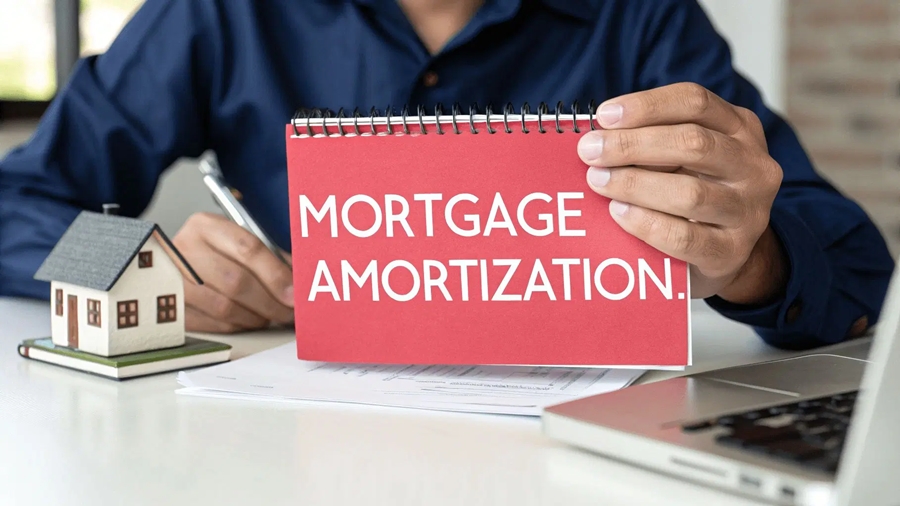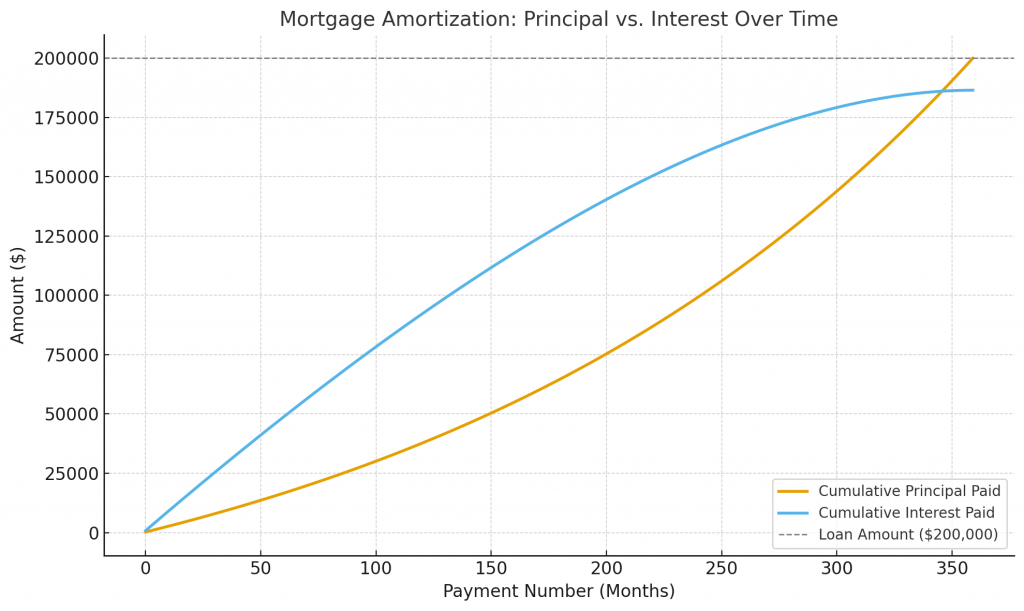
When you take out a home loan, you don’t just pay back the money you borrowed—you also pay interest to the lender. But how are these payments structured over time? This is where mortgage amortization comes in. Understanding it can help you plan your finances, reduce interest costs, and even pay off your home faster.
Table of Contents
- 1 What Is Mortgage Amortization?
- 2 How Mortgage Amortization Works
- 3 Example of Mortgage Amortization
- 4 Factors That Affect Mortgage Amortization
- 5 Benefits of Understanding Mortgage Amortization
- 6 Tips to Manage Your Mortgage Amortization
- 7 FAQs About Mortgage Amortization
- 7.1 What is mortgage amortization in simple terms?
- 7.2 Do all mortgages use amortization?
- 7.3 Why do I pay more interest at the start of my mortgage?
- 7.4 Can I speed up my mortgage amortization?
- 7.5 What is an amortization schedule?
- 7.6 How does loan length affect amortization?
- 7.7 What happens if I refinance my mortgage?
- 7.8 Is biweekly payment better than monthly?
- 7.9 Do adjustable-rate mortgages affect amortization?
- 7.10 How does paying extra on principal help?
- 7.11 What is negative amortization?
- 7.12 How do I calculate my own mortgage amortization?
- 8 Final Thoughts
What Is Mortgage Amortization?
Mortgage amortization is the process of gradually paying off a loan through scheduled monthly payments. Each payment is split between:
- Principal – the portion that reduces your loan balance.
- Interest – the lender’s charge for borrowing money.
At the beginning of the loan term, a larger share of your payment goes toward interest. Over time, more goes toward the principal.
How Mortgage Amortization Works
Imagine you take a 30-year fixed-rate mortgage. Even though your monthly payment stays the same, the way it’s applied changes:
- Early years: Most of your payment goes to interest.
- Later years: More of your payment goes toward the principal.
This gradual shift is called an amortization schedule, a table that shows how each payment is allocated.
Example of Mortgage Amortization
Let’s say you borrow $200,000 at 5% interest for 30 years.
- Monthly payment: about $1,073.
- In the first payment, around $833 goes to interest and $240 to principal.
- By the 20th year, the majority of each payment goes to principal.
This shows how time affects the breakdown of your payments.
Factors That Affect Mortgage Amortization
Several elements influence your amortization schedule:
Loan Term
- Shorter terms (15 years) mean higher payments but faster payoff.
- Longer terms (30 years) mean lower payments but more total interest.
Interest Rate
Higher rates mean more money goes toward interest, especially early on.
Extra Payments
Paying a little extra toward the principal each month can shorten your loan term and save thousands in interest.
Loan Type
- Fixed-rate loans have consistent payments.
- Adjustable-rate mortgages may change payment amounts after adjustments.
Benefits of Understanding Mortgage Amortization
- Better budgeting – Know how much of your payment builds equity.
- Interest savings – Plan extra payments strategically.
- Homeownership goals – Estimate when you’ll fully own your property.
- Refinancing decisions – See how starting over affects total interest.
Sample Mortgage Amortization Schedule (First Year)
Here’s a simplified example based on a $200,000 loan at 5% interest over 30 years (monthly payment ≈ $1,073):
| Payment # | Total Payment | Interest Paid | Principal Paid | Remaining Balance |
|---|---|---|---|---|
| 1 | $1,073 | $833 | $240 | $199,760 |
| 2 | $1,073 | $832 | $241 | $199,519 |
| 3 | $1,073 | $831 | $242 | $199,277 |
| 4 | $1,073 | $830 | $243 | $199,034 |
| 5 | $1,073 | $829 | $244 | $198,790 |
| 6 | $1,073 | $828 | $245 | $198,545 |
| 7 | $1,073 | $826 | $247 | $198,298 |
| 8 | $1,073 | $825 | $248 | $198,050 |
| 9 | $1,073 | $824 | $249 | $197,801 |
| 10 | $1,073 | $823 | $250 | $197,551 |
| 11 | $1,073 | $822 | $251 | $197,300 |
| 12 | $1,073 | $821 | $252 | $197,048 |
What this shows:
- Early payments mostly cover interest, with only small amounts going toward the principal.
- Over time, more of your payment reduces the loan balance, and less goes to interest.

Here’s the visual chart showing how mortgage payments are split:
- In the early years, interest dominates.
- Over time, principal takes over, helping you build equity.
- The dashed line marks the original loan amount ($200,000).
Tips to Manage Your Mortgage Amortization
- Make biweekly payments instead of monthly to pay off faster.
- Apply windfalls (bonuses, tax refunds) toward principal.
- Refinance to a shorter term if you can afford higher payments.
- Track your amortization schedule regularly to stay on top of progress.
FAQs About Mortgage Amortization
What is mortgage amortization in simple terms?
It’s the process of paying off your loan over time through regular payments of principal and interest.
Do all mortgages use amortization?
Most do, but some special loans (like interest-only mortgages) work differently.
Why do I pay more interest at the start of my mortgage?
Because interest is calculated on the remaining loan balance, which is highest at the beginning.
Can I speed up my mortgage amortization?
Yes, by making extra payments toward the principal.
What is an amortization schedule?
A table showing how each payment is divided between principal and interest.
How does loan length affect amortization?
Shorter loans build equity faster and reduce total interest.
What happens if I refinance my mortgage?
Your amortization schedule resets with the new loan.
Is biweekly payment better than monthly?
Yes, because you make one extra payment per year, shortening the loan term.
Do adjustable-rate mortgages affect amortization?
Yes, because your payment amounts may change when interest rates reset.
How does paying extra on principal help?
It reduces your loan balance faster, lowering future interest costs.
What is negative amortization?
When payments don’t cover interest, causing your loan balance to increase instead of decrease.
How do I calculate my own mortgage amortization?
You can use online mortgage calculators or request an amortization schedule from your lender.
Final Thoughts
Understanding mortgage amortization gives you control over your home loan. By knowing how payments are structured, you can make smarter financial decisions—whether that means refinancing, paying extra on principal, or sticking to your schedule. The more you understand amortization, the more effectively you can build equity and achieve financial freedom through homeownership.

Ahmad Faishal is now a full-time writer and former Analyst of BPD DIY Bank. He’s Risk Management Certified. Specializing in writing about financial literacy, Faishal acknowledges the need for a world filled with education and understanding of various financial areas including topics related to managing personal finance, money and investing and considers investoguru as the best place for his knowledge and experience to come together.